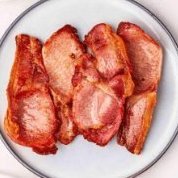Rented or serviced motorcycles - suggestion
-
Recently Browsing 0 members
- No registered users viewing this page.
Announcements
-
Topics
-
-
Popular Contributors
-
-
Latest posts...
-
7,999
-
7
O/A Visa renewal & Oz Passport expiry
Won't outline in this thread as bit off topic. It's very easy process.. Just one piece of advice. Don't scrimp in the photos. Go to professional with guideline print out. The snaps can't be eg digitally altered etc -
29
Virologist network reaffirms support for mRNA vaccine platform
Many people were forced to take the covid shot or they were fired or could not travel. School gave the shots without parent knowing or consenting.- 1
-

-
79
Important announcement regarding Aseannow xmas party.
It is strange. Everyone talking to each other daily, some with strong views, many spending more time here than they do socializing in real life, often big noting themselves. But the suggestion of actually meeting in real life sends all them scurrying. Weird. -
29
Virologist network reaffirms support for mRNA vaccine platform
Post with unsubstantiated claim removed 2 posts replying to it also removed -
7
O/A Visa renewal & Oz Passport expiry
Wow, that is good news. I couldn't remember exactly how it went last time except that I did it all at the embassy in BKK and paid extra (on top of the already astonishing fee) to get it done within (from memory) 1 week, and I picked it up at the Embassy. I'll certainly do it online & by post etc next time (Dec26). Cheers
-
-
Popular in The Pub



.thumb.jpg.3ee24d9400fb02605ea21bc13b1bf901.jpg)





Recommended Posts
Create an account or sign in to comment
You need to be a member in order to leave a comment
Create an account
Sign up for a new account in our community. It's easy!
Register a new accountSign in
Already have an account? Sign in here.
Sign In Now